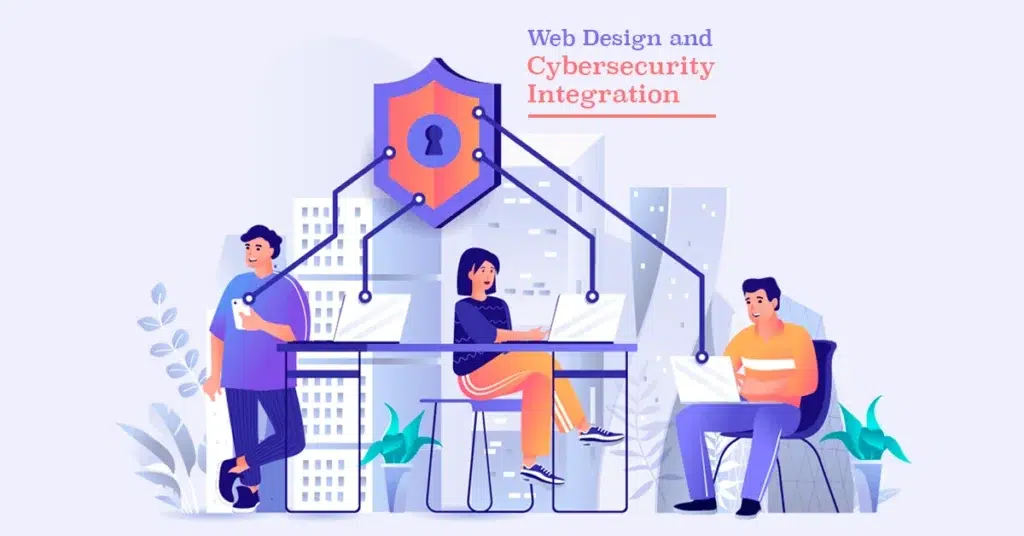
The Perfect Duo: Web Design and Cybersecurity
In the digital world, Web Design and Cybersecurity are like two peas in a pod, working hand in hand to create a seamless and secure online experience. But why are they better together, and what exactly do we mean by these buzzwords?
Why They're Better Together
The Importance of a United Front
When Web Design and Cybersecurity join forces, they form a powerful alliance that prioritises both functionality and safety. A well-designed website not only looks good but also incorporates security measures seamlessly, providing users with peace of mind while navigating the online space.
Real-World Examples of Collaboration
Consider the integration of multi-factor authentication into a website’s login process. This is a perfect example of how Web Design elements work alongside Cybersecurity protocols to create a robust defence against unauthorised access.
Breaking Down the Buzzwords
What We Mean by Web Design
When we talk about Web Design, we’re referring to the visual aesthetics, layout, and overall user experience of a website. It encompasses everything from colour schemes and typography to navigation menus and interactive elements.
What We Mean by Cybersecurity
On the other hand, Cybersecurity involves safeguarding digital assets from unauthorised access or attacks. This includes implementing encryption protocols, firewalls, and regular security audits to ensure data protection and privacy.

The Role of Web Design in Cybersecurity
When it comes to the digital realm, Web Design and Cybersecurity are not just separate entities; they are interconnected components that play a crucial role in shaping the online landscape. Understanding how Web Design contributes to the overall security of a website is essential for creating a robust defence against cyber threats.
Designing with Security in Mind
Incorporating security measures into the very fabric of a website’s design is paramount for safeguarding user data and maintaining a secure online environment. Web Designers must prioritise creating secure user interfaces that protect sensitive information from unauthorised access. By implementing effective measures such as secure authentication systems and encryption protocols, they can mitigate the risks associated with cyber threats and protect user data, as evidenced by recent studies.
Furthermore, intuitive navigation and safety go hand in hand when it comes to web design. A well-designed website should provide users with clear and easily navigable paths while ensuring their safety throughout their online journey. This involves considering factors such as user-friendly error messages, logical flow between pages, and clear indications of secure connections.
Visual Cues for Enhanced Security
Visual cues play a significant role in enhancing the perception of security for website visitors. Trust badges and secure checkouts serve as visual indicators that reassure users about the safety of their transactions. These elements not only enhance the overall aesthetics of a website but also contribute to building trust with customers, making it easier for them to complete their purchases without worrying about their information being stolen by hackers or scammers.
Moreover, the strategic use of colour and layout can influence how users perceive the credibility and security of a website. For instance, using calming colours such as blue or green in areas related to sensitive information can evoke feelings of trust and reliability. Additionally, employing consistent and visually appealing layouts across different sections of a website can instil confidence in users regarding its legitimacy.
By integrating these visual cues into web design practices, designers can effectively communicate the commitment to cybersecurity while providing an aesthetically pleasing experience for users.
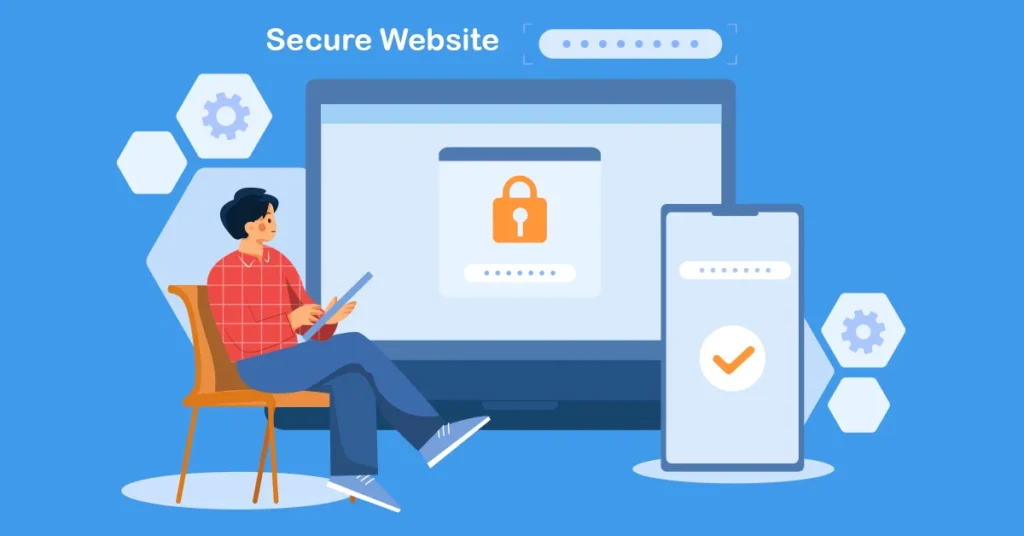
Cybersecurity Measures in Web Design
As the digital landscape continues to evolve, the integration of robust Cybersecurity measures within Web Design becomes increasingly vital. This section will delve into the essential practices and protocols that underpin the symbiotic relationship between these two domains.
Encryption and Secure Coding Practices
HTTPS and Beyond
One of the fundamental pillars of Cybersecurity within Web Design is the implementation of encryption protocols, with HTTPS (Hypertext Transfer Protocol Secure) standing at the forefront. By encrypting data transmitted between a user’s browser and the website, HTTPS ensures that sensitive information remains secure from potential eavesdropping or tampering attempts. This not only fosters trust among users but also contributes to a higher ranking in search engine results, thereby enhancing visibility and credibility.
In addition to HTTPS, employing advanced encryption algorithms such as AES (Advanced Encryption Standard) further fortifies data protection. These algorithms utilise complex mathematical computations to encode information, rendering it indecipherable to unauthorised entities. By integrating these cutting-edge encryption methods into web design practices, organisations can uphold stringent data security standards while fostering user confidence.
Keeping the Backdoor Locked
Beyond encryption, secure coding practices play a pivotal role in fortifying the digital infrastructure against malicious exploits. By adhering to secure coding guidelines such as input validation, output encoding, and proper error handling, developers can mitigate common vulnerabilities like SQL injection and cross-site scripting. Furthermore, adopting secure authentication mechanisms through multi-factor authentication (MFA) bolsters access controls and shields against unauthorised entry points.
The significance of these measures extends beyond mere compliance; they form an integral part of proactive defence strategies that safeguard both user data and organisational assets from cyber threats.
Regular Security Audits and Updates
The Lifecycle of a Secure Website
Maintaining a resilient security posture necessitates ongoing vigilance through regular security audits and updates. A comprehensive audit encompasses thorough assessments of system configurations, network traffic analysis, vulnerability scans, and penetration testing to identify potential weak points or anomalies within the web infrastructure.
Moreover, embracing a proactive approach involves staying abreast of emerging threats by continuously updating software components and security patches. This iterative process ensures that websites remain fortified against evolving attack vectors while aligning with industry best practices for cybersecurity resilience.
Tools and Practices for Keeping Up
To streamline this continuous cycle of security maintenance, leveraging automated tools such as vulnerability scanners, intrusion detection systems (IDS), and security information event management (SIEM) solutions proves invaluable. These tools not only expedite threat identification but also facilitate prompt remediation actions through real-time alerts and actionable insights derived from log analyses.
Furthermore, cultivating a culture of awareness among web development teams regarding cybersecurity best practices fosters a collective responsibility for upholding robust defences. Regular training sessions on secure coding principles and emerging threat landscapes empower developers to proactively integrate security considerations into their design paradigms.
In essence, weaving these cybersecurity measures into web design frameworks engenders an environment where digital experiences are underpinned by resilience against adversarial incursions.
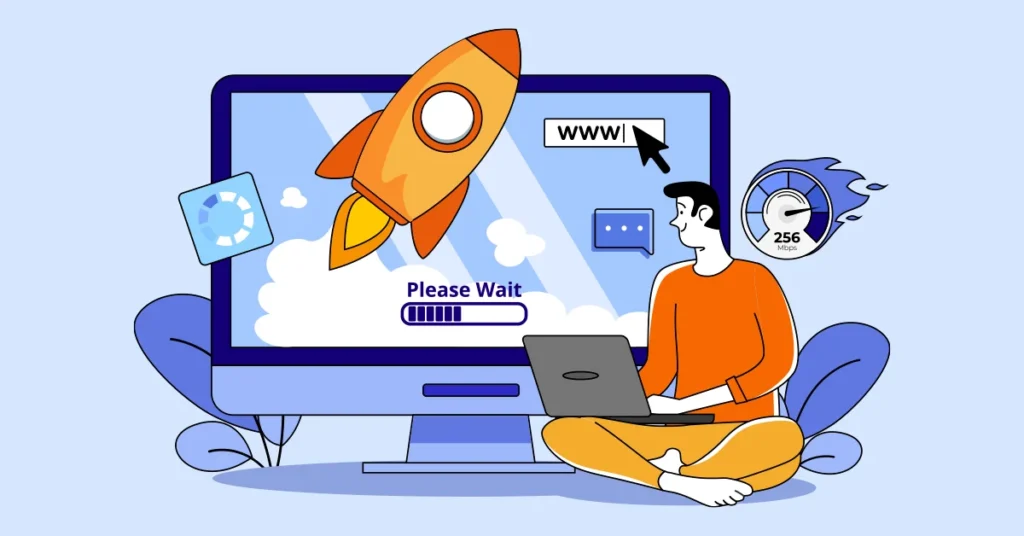
Enhancing Website Performance through Design and Security
In the realm of digital landscapes, achieving a delicate balance between Performance and Security is paramount for delivering an optimal user experience. Let’s explore how web designers and cybersecurity experts collaborate to optimise website performance while fortifying its defence against potential threats.
The Speed-Security Balance
When it comes to website performance, load times play a pivotal role in shaping user satisfaction and engagement. However, this must be balanced with robust security measures to ensure the safety of user data and interactions.
Optimising Load Times While Staying Secure
Web designers are tasked with implementing strategies to streamline load times without compromising security. By optimising image sizes, leveraging browser caching, and minimising HTTP requests, they can enhance website speed while maintaining a secure environment. This approach not only fosters a seamless browsing experience but also mitigates the risk of potential security vulnerabilities.
The Impact of Security Measures on Performance
Conversely, stringent security measures such as encryption protocols and firewalls may introduce overhead that impacts website performance. It is crucial for cybersecurity professionals to collaborate with web designers in implementing security solutions that minimise latency and maintain optimal performance levels. This collaborative effort ensures that robust security measures do not come at the expense of speed and responsiveness.
Mobile Optimization and Security
With the proliferation of mobile devices as primary means of accessing online content, prioritising mobile optimization and security has become imperative for web design and cybersecurity integration.
The Growing Need for Mobile Security
As mobile usage continues to soar, cyber threats targeting mobile platforms have become increasingly prevalent. Web designers must adapt their design paradigms to cater to mobile interfaces while incorporating robust security features tailored specifically for mobile environments. This includes responsive design practices that ensure seamless functionality across various screen sizes without compromising on security standards.
Designing for Speed and Safety on Smaller Screens
The challenge lies in designing websites that deliver swift loading times on smaller screens while upholding stringent security protocols. This involves optimising images for mobile viewing, leveraging accelerated mobile pages (AMP) technology, and employing secure authentication methods tailored for mobile users. By integrating these elements into the design framework, web designers can create a harmonious balance between speed and safety in the mobile landscape.
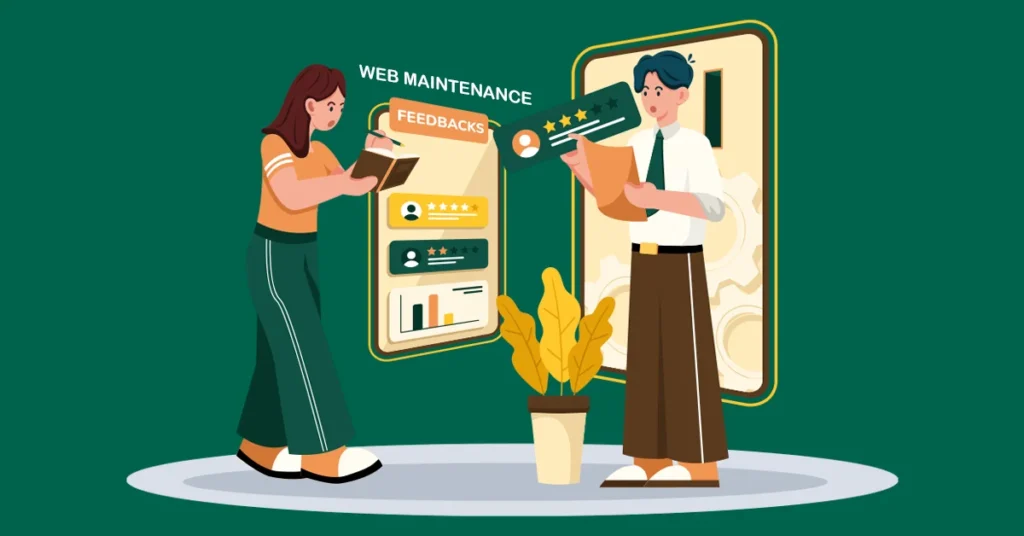
Web Maintenance: A Joint Effort
The Ongoing Task of Web Maintenance
Scheduling Regular Check-Ups
Regular check-ups are akin to routine health assessments for websites, ensuring that all components function optimally and remain resilient against potential vulnerabilities.
According to a recent survey conducted among 140 website professionals globally, 87.47% of respondents offer maintenance services, underscoring the widespread recognition of the importance of regular upkeep in preserving website integrity and security.
Engaging Users in Maintenance
Incorporating user engagement into web maintenance practices fosters a sense of inclusivity and transparency. By seeking user feedback on their experiences with website functionality and security measures, administrators can gain valuable insights into areas that require attention or enhancement. This aligns with the findings from the survey, where 78% of respondents have a security breach policy in place, indicating a proactive approach to addressing potential threats through user-informed maintenance strategies.
The Role of Feedback in Web Maintenance
Learning from User Experiences
User experiences serve as invaluable sources of information for identifying pain points or vulnerabilities within a website’s infrastructure. By actively soliciting feedback from users regarding their interactions with the platform, administrators can pinpoint areas that necessitate refinement or additional security measures. This aligns with the survey data, which indicates that 85.3% of respondents offer WordPress maintenance services, signifying a concerted effort to leverage user insights for continuous improvement.
Implementing Changes for Better Security and Design
Armed with user feedback and industry best practices, web administrators can implement targeted changes aimed at fortifying both security protocols and design elements. Whether it involves patching identified vulnerabilities or enhancing user interface features based on usability feedback, this iterative process ensures that websites remain resilient against emerging threats while delivering an optimal user experience.
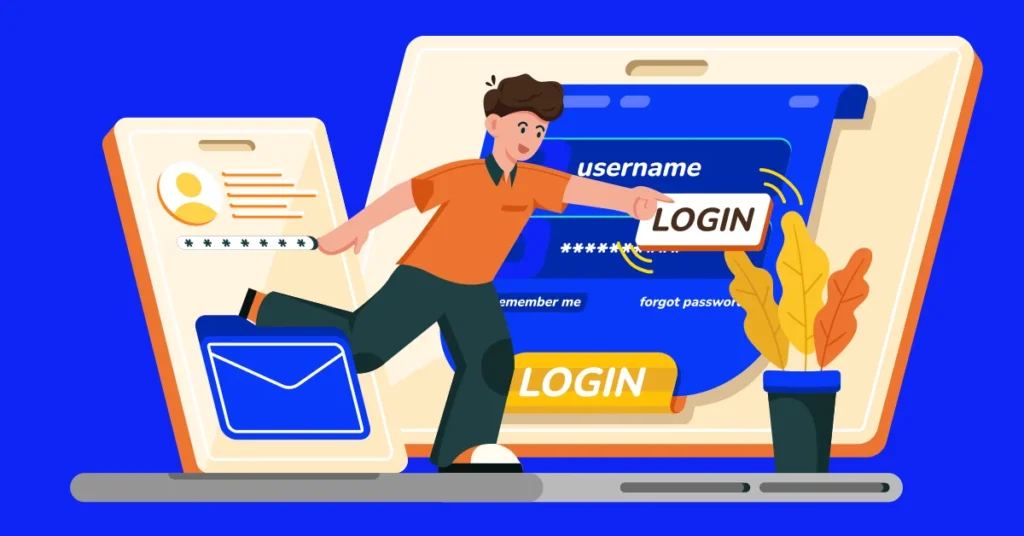
Crafting the Ultimate Customer Experience
Balancing Aesthetics and Security
When it comes to crafting the ultimate customer experience, finding the delicate equilibrium between Web Design and Cybersecurity is paramount. It’s not just about creating visually appealing websites; it’s also about ensuring that users feel secure and protected throughout their online interactions.
Making Security User-Friendly
Incorporating robust security measures into a website doesn’t have to come at the expense of user-friendliness. Web Designers can implement intuitive security features that seamlessly integrate with the overall user experience. For instance, they can utilise clear and concise language in error messages related to security checks, ensuring that users understand the purpose without feeling overwhelmed by technical jargon. By making security elements transparent and easy to navigate, designers can instil confidence in users while maintaining a high level of protection.
Moreover, providing simple yet effective guidance on password creation and management can empower users to take an active role in safeguarding their accounts. Through interactive tooltips or visual cues during account setup, websites can educate users on best practices for creating strong passwords without compromising ease of use.
Design Elements That Enhance Trust
Trust is a cornerstone of the customer experience, and Web Design plays a pivotal role in fostering a sense of trustworthiness. Incorporating elements such as customer testimonials, prominently displayed privacy policies, and trust seals from reputable cybersecurity organisations can reassure visitors about the credibility and reliability of a website.
Additionally, leveraging visual storytelling through impactful imagery or videos can evoke emotional connections with users, further enhancing their trust in the brand’s commitment to both aesthetics and security. By showcasing real-life scenarios where security measures have protected customers’ data or privacy, websites can effectively communicate their dedication to providing a secure environment without sacrificing visual appeal.
The Future of Web Design and Cybersecurity
As technology continues to advance at a rapid pace, the future landscape of Web Design and Cybersecurity integration holds exciting prospects for enhancing the digital experience.
Emerging Trends to Watch
The convergence of artificial intelligence (AI) with web design presents an array of opportunities for personalised user experiences while bolstering cybersecurity defences. AI-powered chatbots not only streamline customer interactions but also serve as proactive sentinels against potential security threats by identifying suspicious patterns or behaviours in real-time.
Furthermore, blockchain technology is poised to revolutionise data integrity and transactional security within web environments. Its decentralised nature offers unparalleled resilience against tampering or unauthorised access, laying the groundwork for a new era of trust-centric online interactions.
Preparing for Tomorrow’s Challenges
As cyber threats become increasingly sophisticated, staying ahead of tomorrow’s challenges requires proactive collaboration between web designers and cybersecurity experts. Embracing continuous education on emerging threat vectors and evolving design paradigms will be essential for fortifying digital ecosystems against adversarial incursions.
Moreover, fostering a culture of transparency through open communication with users about ongoing security enhancements will be instrumental in building lasting relationships based on mutual trust and respect.




